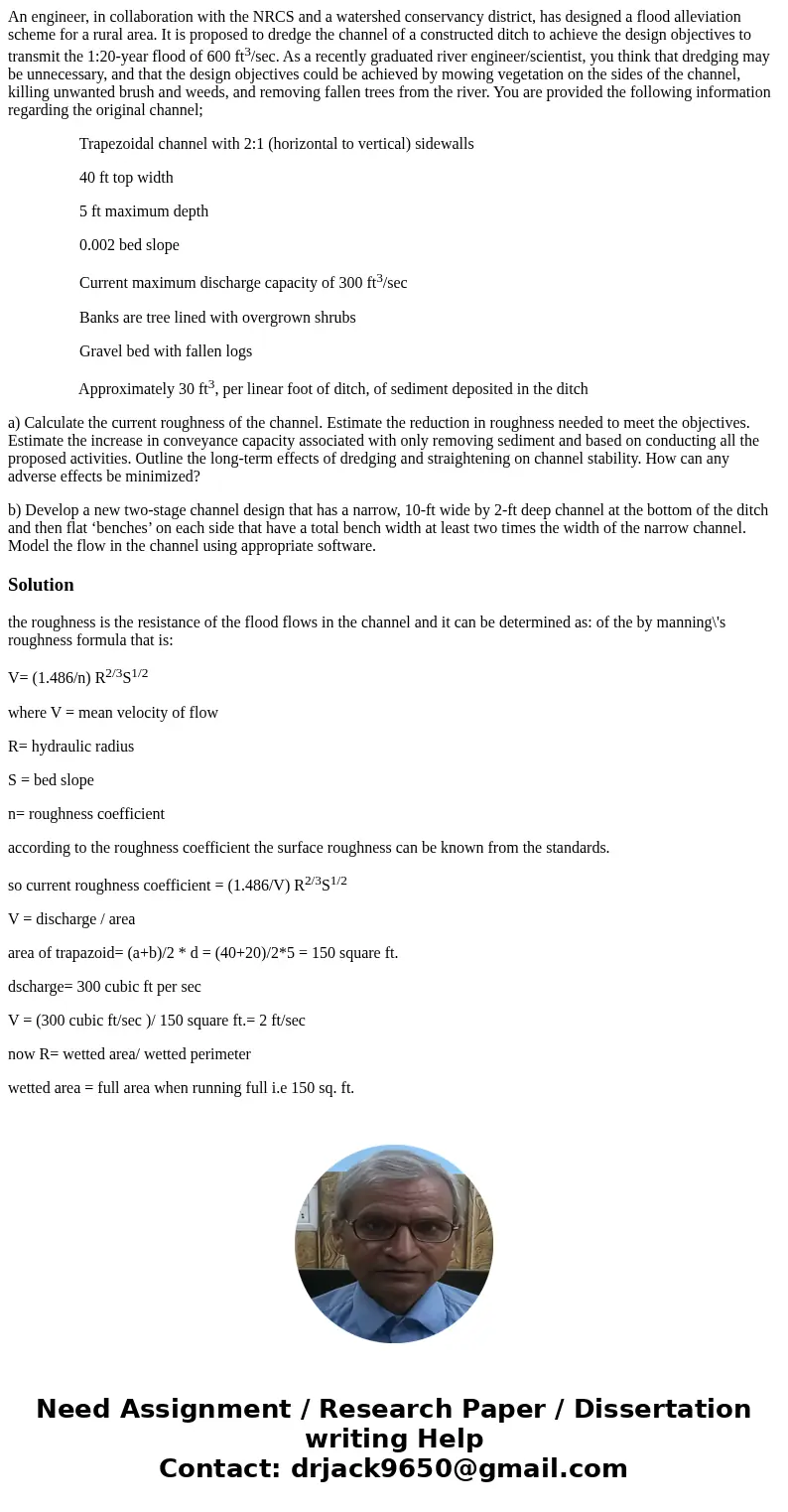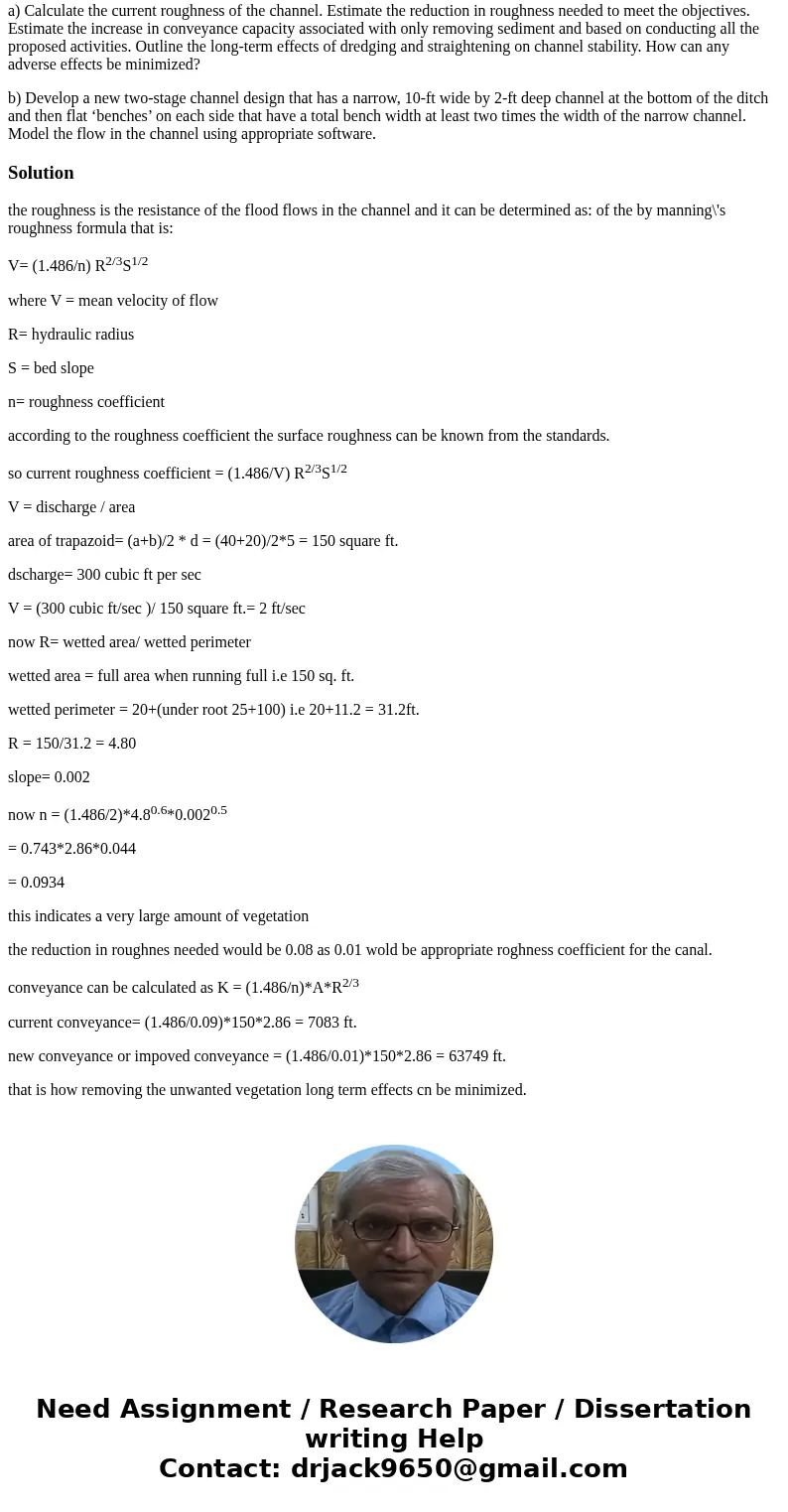An engineer in collaboration with the NRCS and a watershed c
An engineer, in collaboration with the NRCS and a watershed conservancy district, has designed a flood alleviation scheme for a rural area. It is proposed to dredge the channel of a constructed ditch to achieve the design objectives to transmit the 1:20-year flood of 600 ft3/sec. As a recently graduated river engineer/scientist, you think that dredging may be unnecessary, and that the design objectives could be achieved by mowing vegetation on the sides of the channel, killing unwanted brush and weeds, and removing fallen trees from the river. You are provided the following information regarding the original channel;
Trapezoidal channel with 2:1 (horizontal to vertical) sidewalls
40 ft top width
5 ft maximum depth
0.002 bed slope
Current maximum discharge capacity of 300 ft3/sec
Banks are tree lined with overgrown shrubs
Gravel bed with fallen logs
Approximately 30 ft3, per linear foot of ditch, of sediment deposited in the ditch
a) Calculate the current roughness of the channel. Estimate the reduction in roughness needed to meet the objectives. Estimate the increase in conveyance capacity associated with only removing sediment and based on conducting all the proposed activities. Outline the long-term effects of dredging and straightening on channel stability. How can any adverse effects be minimized?
b) Develop a new two-stage channel design that has a narrow, 10-ft wide by 2-ft deep channel at the bottom of the ditch and then flat ‘benches’ on each side that have a total bench width at least two times the width of the narrow channel. Model the flow in the channel using appropriate software.
Solution
the roughness is the resistance of the flood flows in the channel and it can be determined as: of the by manning\'s roughness formula that is:
V= (1.486/n) R2/3S1/2
where V = mean velocity of flow
R= hydraulic radius
S = bed slope
n= roughness coefficient
according to the roughness coefficient the surface roughness can be known from the standards.
so current roughness coefficient = (1.486/V) R2/3S1/2
V = discharge / area
area of trapazoid= (a+b)/2 * d = (40+20)/2*5 = 150 square ft.
dscharge= 300 cubic ft per sec
V = (300 cubic ft/sec )/ 150 square ft.= 2 ft/sec
now R= wetted area/ wetted perimeter
wetted area = full area when running full i.e 150 sq. ft.
wetted perimeter = 20+(under root 25+100) i.e 20+11.2 = 31.2ft.
R = 150/31.2 = 4.80
slope= 0.002
now n = (1.486/2)*4.80.6*0.0020.5
= 0.743*2.86*0.044
= 0.0934
this indicates a very large amount of vegetation
the reduction in roughnes needed would be 0.08 as 0.01 wold be appropriate roghness coefficient for the canal.
conveyance can be calculated as K = (1.486/n)*A*R2/3
current conveyance= (1.486/0.09)*150*2.86 = 7083 ft.
new conveyance or impoved conveyance = (1.486/0.01)*150*2.86 = 63749 ft.
that is how removing the unwanted vegetation long term effects cn be minimized.


 Homework Sourse
Homework Sourse